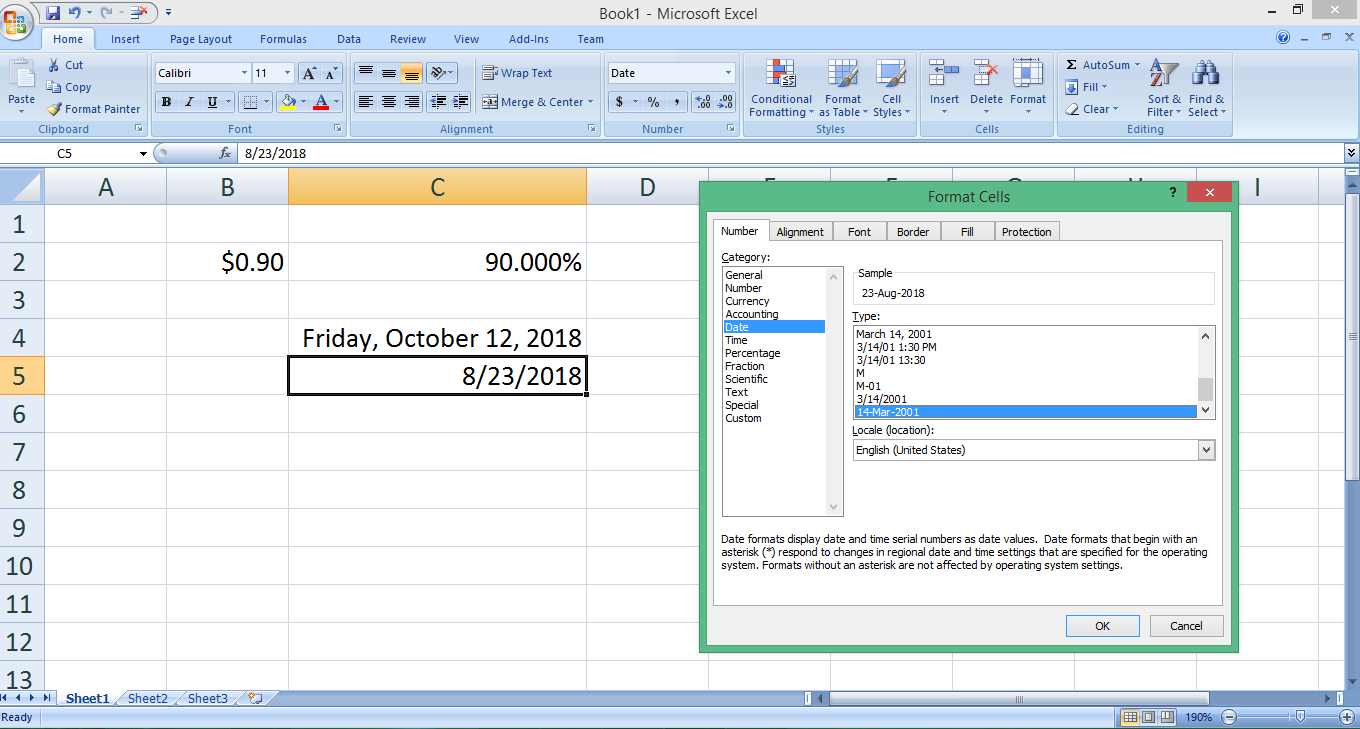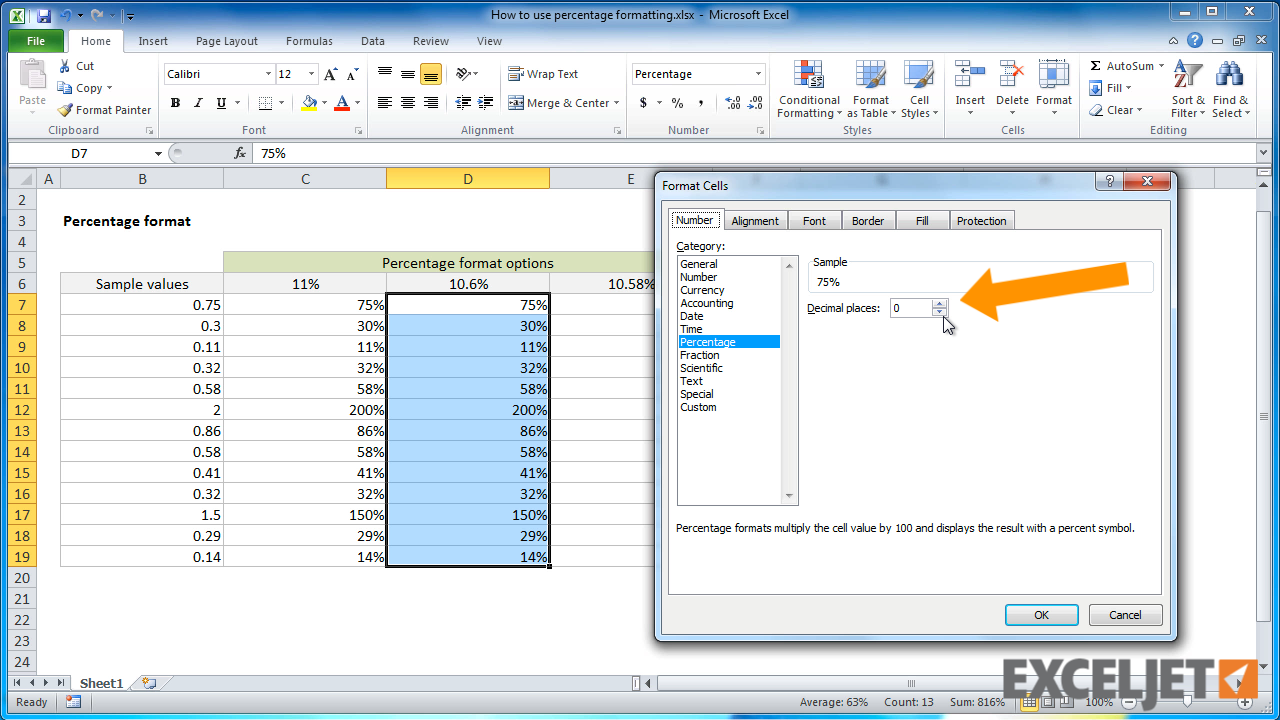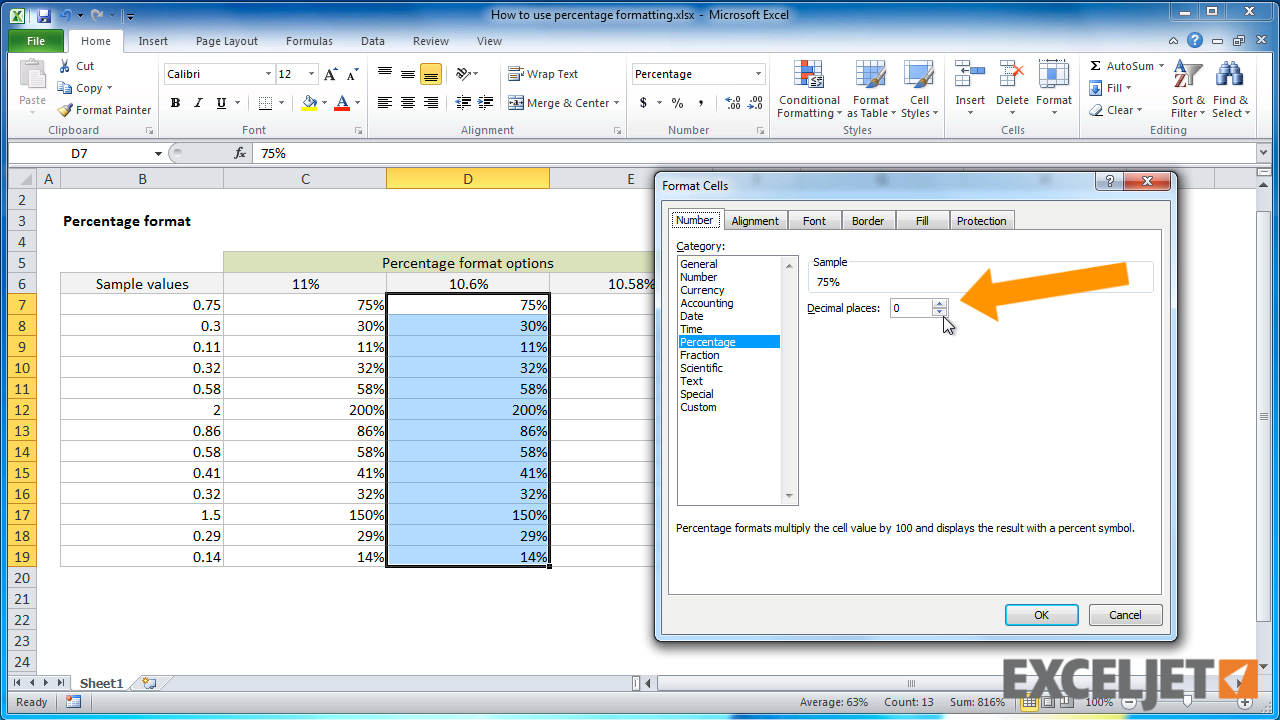Change Date Format in Excel
How to Change The Date Format in Excel
If you enter a date into Excel, it formats this data in accordance with the default dates. Changing a cell's format is possible and saves the date as an integer. For example, January 6, 2020 will become 48660 because the data in the Excel base dates are January 1, 1900. This option can help format dates using Excel. How can we modify date formatting in Excel?

How to change date format in Excel and create custom formatting?
We'll start with an example of formatting a calendar using Excel. This guide shows how to change date format from Excel. Date and time are the most commonly used data formats on Excel compared to numbers. However these can be confusing for the user, because the same dates are possible in excel by displaying them in several ways. Knowledge of Excel format is a great way to save time.
If you don't like the default date format, you can choose another date format in Excel, such as " February 2, 2012" or " 2/2/12". You can also create your own custom format in Excel desktop. Choose from a list of date formats Follow these steps: Select the cells you want to format. Press CTRL+1. In the Format Cells box, click the Number tab.
Format a date the way you want
Date format based on your desire. Excel for 365 for Microsoft. Excel for web. Excel 2121. Excel 2019 for Mac. Excel 2016 for Mac. Excel 2013 and 2010. Excel 2007 Excel for Mac. Microsoft might give this a name "2 -Feb". Changing default date in Excel can cause changes. You can use Excel's default Date Format if it does not work for the standard Date Format.
Creating a custom date format in Excel
If there is no predefined Excel date format you could easily customize it. Let me explain. How do one set an Excel Date format in an existing format? If so, select Dates in categories first. Select a format under Type. Alternatively, you can customize the format in the Type box. If using custom date formats in Excel, the following code may be used. When importing time formats for Excel, use this code to get them. To configure the format date and time, include date and time units in the format code.

- On the Home tab, click the Dialog Box Launcher next to Number.
- In the Category box, click Date or Time, and then choose the number format that is closest in style to the one you want to create. (When creating custom number formats, it's easier to start from an existing format than it is to start from scratch.)
- In the Category box, click Custom. In the Type box, you should see the format code matching the date or time format you selected in the step 3. The built-in date or time format can't be changed or deleted, so don't worry about overwriting it.
- In the Type box, make the necessary changes to the format. You can use any of the codes in the following tables:
How to create a custom Excel date format for another locale?
When using a different language for displaying a date, you have to use a custom format. The date will be labelled by local code. Local codes must appear in squares and preceded by a dollar sign ($) and a dash ( - ). This page provides examples of local codes. In other words, you can use Excel to set date formatting in the Chinese locale. The above image shows some examples of the same date formatted with different codes local to traditional.
How to convert date format to another locale?
If your files contain a foreign date you will probably need the date format used for your location on Earth. Tell me the format in which the American date format would be converted to European style format (Day/Month/Year). If you are displaying the dates for another language, you will be asked for the date formatting to be customized using a local code.
Each of these options are ways to format dates in Excel. To help with organizing data in Excel, learn about how to change the date format in Excel. Choosing from the Date Format List Formatting dates in Excel is easiest with the date formats list. Most date formats you may want to use can be found in this menu.
Default date format in Excel
If you use Excel dates then the short format and the longer format can be found in Windows Regional Settings. This standard format has asterisks (*) in the Dialog box Format Cells. When you change your Time Settings to Format cell it automatically switches to Date Cells. We'll get right back to this in the next section.

How to quickly apply default date and time formatting in Excel?
Microsoft Excel supports two formats of dates and time, Short and Long. To quickly change the format in the Excel spreadsheet to the default format do what the below steps do: It opens the standard format cells dialog where you can change date format. For quick setting the date format for Excel to, click the Ctrl+ Shift+#. Just take into account that this shortcut always uses Dd mmmYy format as on January 15th - no matter the region in Windows settings.
How to change the default date and time formats in Excel?
You will need to select the default date format and/or time format from the settings page. If the Control Panel opens in Category Views, click Clock, Languages, and Regions. In format select the regional format and choose a date time format by click the arrow beside a format you wish to change and pick the desired one in the drop down list.
Converting Date Formats to Other Locales
When a date is used at a different location, you may have to change it in another location. You may also customize your local settings.
How do you change date format to MM-DD-YY in Excel?
Selecting the data in each cell first selects the formatting of the cell. Select Custom on the number of tabs, then type 'dd mm-yy' into the text box and click OK. Formatted your date.
Why is my date format not changing in Excel?
Test this method in Excel unless the date formatting changes. Check the box beside the options Delimited for the activation. Click on the Next button twice to move to the installation page. Select Date -> select the option drop down -> select custom MDY options. Click to finish.